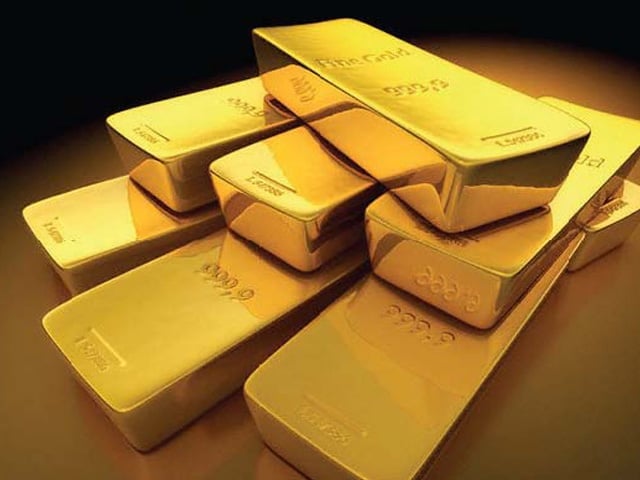KARACHI: In a notable shift, gold prices in Pakistan have witnessed a consecutive decline over the past two days, reflecting a similar trend observed in international markets. On Tuesday, the price per tola dropped by Rs1,400, settling at Rs277,900 in the local market. The price for 10 grams of gold also fell, decreasing by Rs1,201 to close at Rs238,254, as reported by the All-Pakistan Gems and Jewellers Sarafa Association (APGJSA).
Recent Trends in Gold Prices
This decline follows a previous drop on Monday, where the price per tola had already decreased by Rs1,500, ending at Rs279,300. The international gold market has also seen fluctuations, with gold priced at $2,661 per ounce on Tuesday, accompanied by a $20 premium, marking a $14 drop from previous levels. Such movements in gold prices are often indicative of broader economic trends and investor sentiment.
Market Analysis
Adnan Agar, Director of Interactive Commodities, provided insights into the current state of the gold market, noting, “There hasn’t been much movement in the gold market today.” The price of gold fluctuated between a high of $2,675 and a low of $2,660, resulting in a modest $15 range. This lack of volatility is largely attributed to market anticipation surrounding the release of US monthly inflation data, scheduled for Wednesday.
Agar elaborated on the potential implications of the inflation data, stating that if inflation rises, the US Federal Reserve may pause its interest rate cuts. Conversely, a downward trend in inflation could lead the Fed to maintain its current approach. Over the past two months, inflation data has shown a gradual uptick, and the figures expected today are anticipated to either align with the previous month or remain stable without significant changes.
Political Factors Influencing Gold Prices
The gold market is also bracing for potential economic implications stemming from Donald Trump’s anticipated return to the political scene on January 20. Agar highlighted that if Trump reintroduces tariffs akin to those during his previous administration, inflation could spike. This scenario may prompt the Fed to maintain its current stance on interest rates, delaying further cuts until the broader economic impacts of such policies become clearer.
Global Market Dynamics
Globally, gold markets are exhibiting caution ahead of the crucial US inflation data. As of 1440 GMT, spot gold remained relatively stable at $2,663.29 per ounce, briefly climbing 0.5% following the release of the Producer Price Index (PPI) data. The PPI indicated an annual increase of 3.3% in December, slightly below the 3.4% rise anticipated by economists surveyed by Reuters.
Currency Exchange Rates
In the context of currency exchange, the Pakistani rupee has shown relative stability against the US dollar on Tuesday, experiencing a minor depreciation of 0.01% in the interbank market. By the close of trading, the rupee ended at 278.72, reflecting a marginal loss of 4 paisa against the dollar. This follows a closing rate of 278.68 on Monday, according to data from the State Bank of Pakistan (SBP).
Broader Economic Context
On the global stage, the US dollar hovered near its highest level in over two years on Tuesday, buoyed by robust economic data that led traders to adjust their expectations for US interest rate cuts in 2025. Concurrently, concerns regarding the UK’s fiscal stability have kept the British pound under pressure, further influencing global market dynamics.
Conclusion
The recent decline in gold prices in Pakistan, alongside the fluctuations in international markets, underscores the intricate relationship between local and global economic factors. As investors and market analysts await the upcoming inflation data, the gold market remains in a state of cautious anticipation, with potential implications for both local and international economic landscapes. The interplay of political developments, currency stability, and inflation trends will continue to shape the future of gold prices in Pakistan and beyond.




